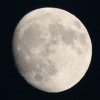Well, the votes were counted and the decision made: Pluto was demoted to less than planetary status. The astronomy and science textbook publishers are rubbing their hands with glee as new editions will have to be printed and plucked from their shelves by eager homeschoolers and teachers keen to get their facts right.
Unfortunately, things are never so clear cut.
A fierce backlash has begun against the decision has begun, says the BBC. The lead scientist on NASA’s robotic mission to Pluto, Alan Stern, called the ruling “embarrassing”, while the chair of the committee, Owen Gingerich, implied that the vote had been “hijacked”.
http://news.bbc.co.uk/1/hi/sci/tech/5283956.stm
It seems, however, that many of those arguing against the demotion of Pluto to dwarf planet status had already left the meeting because of other commitments before the final voting took place. Indeed, only 10% of the 2700 delegates at this meeting actually voted!
Gingerich, was among the 90% who couldn’t vote as he had to return to the US. He says electronic balloting must be introduced in the future. Stern too was unable to vote, “I was not allowed to vote because I was not in a room in Prague on Thursday 24th. Of 10,000 astronomers, 4% were in that room – you can’t even claim consensus,” he told the Beeb.
This left the anti-Plutonists with an open field to throw this tragic rock into a lower orbit.
Stern expressed even further consternation but added that he could not see the resolution standing for very long and wasn’t planning on editing the manuscript for his forthcoming astronomy textbook just yet.
Caltech’s Mike Brown, co-discoverer of UB313 is quite happy to live in a solar system with just eight planets thought. “Eight is enough,” he told the Associated Press, jokingly adding: “I may go down in history as the guy who killed Pluto.”
Whichever way the solar count finally goes, it seems that the arguments are adding a frisson to astronomy that has been sadly lacking for many years. Even if the textbooks stay the same, bookshops would be well advised to stock up early for the Christmas rush as a whole new wave of budding astronomers clamber for space books and maps of the night skies.


 It might seem like a trivial question, and most people would probably say 28 days. But, it isn’t so simple.
It might seem like a trivial question, and most people would probably say 28 days. But, it isn’t so simple.
 Like an adolescent unfortunate, Jupiter has got spots and it’s all down to climate change. The latest images from the Hubble space telescope reveal details of the second red spot that formed in the atmosphere of the gas giant.
Like an adolescent unfortunate, Jupiter has got spots and it’s all down to climate change. The latest images from the Hubble space telescope reveal details of the second red spot that formed in the atmosphere of the gas giant.